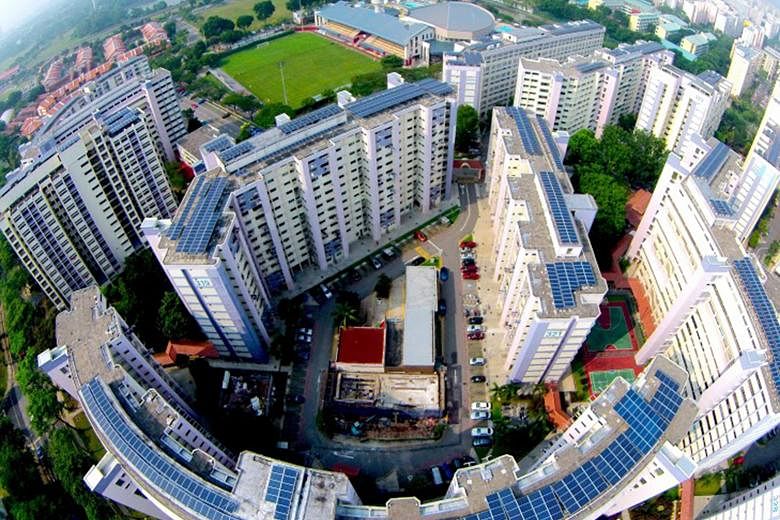When tech giant Apple called for its Singapore operations to be fuelled 100 per cent by the sun, its local energy supplier Sunseap was left desperately searching for a bright idea.
Where on this tiny, land-scarce island would it find enough space for a solar installation large enough to power Apple's Singapore outfit?
Sunseap's solution was to take to the roofs - other people's roofs, to be specific.
In a landmark contract for an undisclosed amount that started this January, Apple receives power from solar panels on the rooftops of more than 800 Housing Board buildings across the island.
Sunseap-supplied solar panels on HDB buildings in areas such as Jurong, Tampines, Sembawang and Marine Parade harness up to 40 gigawatt hours of energy for Apple. This supplements panels on the iPhone-maker's own Yio Chu Kang office which generate 1.1 megawatts of electricity at peak capacity. This is roughly the amount of electricity 250 HDB households would use on average each year.
Together, the onsite and offsite supplies fuel all of Apple's operations here, including its 2,500-person corporate campus and upcoming Apple Store in Orchard Road.
The arrangement, said to be the first of its kind in South-east Asia, made Apple the first company in Singapore to rely entirely on renewable energy. United States-based Apple aims to power 100 per cent of its facilities and operations worldwide with clean fuel.
Sunseap installs its panels for free on commercial properties, saving its clients the hefty upfront cost of installing them themselves. The panels generate power for its clients, like Apple and the HDB, who pay it for what they consume.
Sunseap co-founder and director Frank Phuan says: "The Apple project has laid the groundwork for further solar development in Singapore and the region in many ways.
"Previously in Singapore, the only way to adopt clean energy was to install a photovoltaic system to generate solar energy. However, limitations in space restrict large-scale adoption." Photovoltaic systems convert light into electricity using semiconducting materials that create voltage upon exposure to light.
Mr Phuan adds that he hopes Apple's efforts will encourage uptake in Singapore for clean energy, especially by other US multinational firms and listed companies.
One of Singapore's largest solar energy providers, Sunseap has in recent years landed major government tenders including an HDB contract in 2014 to install panels on 680 residential blocks in four towns.
In May, it partnered SMRT to run Bishan depot on solar power by the end of October.
Last month, it completed the installation of $30 million worth of solar panels on the warehouse rooftop of Jurong Port, offsetting more than 60 per cent of the port's electricity needs and making it the largest port-based solar facility in the world.
Sunseap is now looking at expanding in the region. It recently signed a tender to develop a solar farm in Rajasthan, India, and is in negotiations to close deals in Australia, Malaysia, Indonesia and Thailand.


